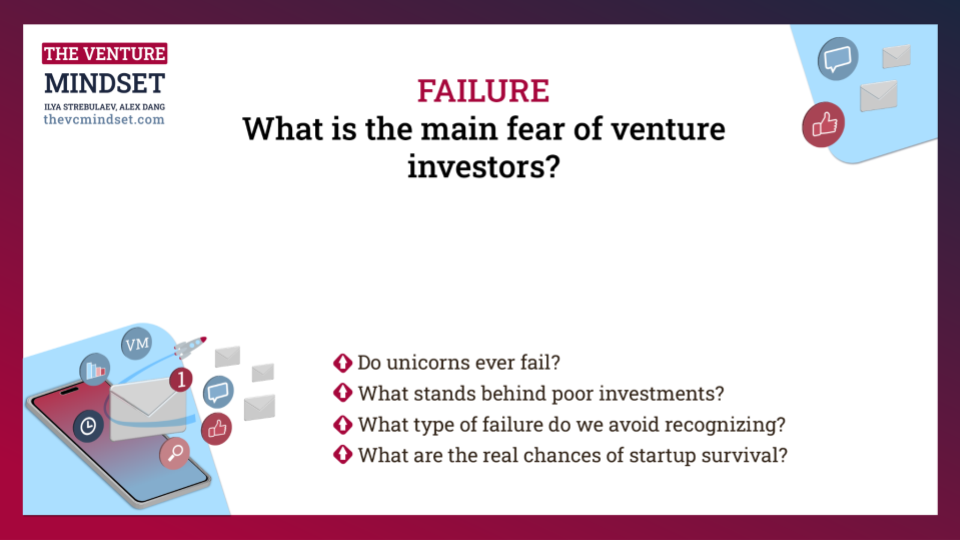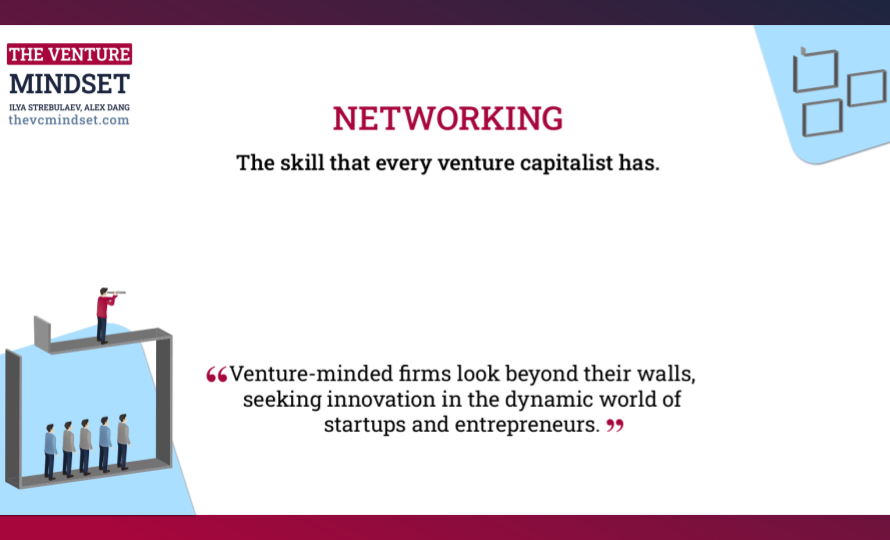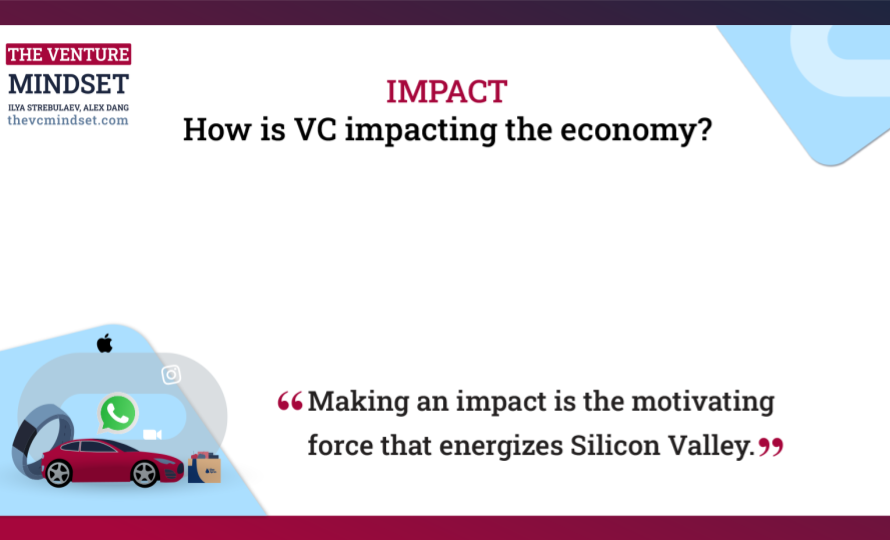We tend to praise success and flawless performance. Awards are given, bonuses are paid, and promotions beckon. However, if we had to pick a single factor that has made the Silicon Valley culture so unique and successful, we would point to its resilience to failure. Therefore, we dedicate this newsletter to insights about failure.
FAILURE
In the world of innovation, failure must not be considered a sign of bad performance or low qualifications, but rather as an inevitable part of efforts to make new discoveries. The more ambitious the goal, the higher the chances of failure. In our workshops, we often share this comment by Jeff Bezos: “We need big failures in order to move the needle. If we don’t, we’re not swinging enough.” Don’t be upset with failure. And as a decision maker, learn to incentivize constructive failure. It’s part of the game. Leaders must create a corporate culture where failure is praised, not penalized. Innovation and failure go hand in hand.
Receive The Venture Mindset newsletter first. Subscribe now
1. Even Unicorns Can Fail
Startups with extremely high valuations are like celebrities. They are praised and admired. But even some startup unicorns eventually fail—not as often as other VC-backed startups, but failure is still possible. In our sample of 1,110 unicorns, 17 (or about 1.5%) eventually went bankrupt, compared to the 21% bankruptcy rate for our sample of randomly selected US VC-backed startups, matched to the unicorn sample by year of first VC funding. (of course, there are other ways to fail, not just go bankrupt)
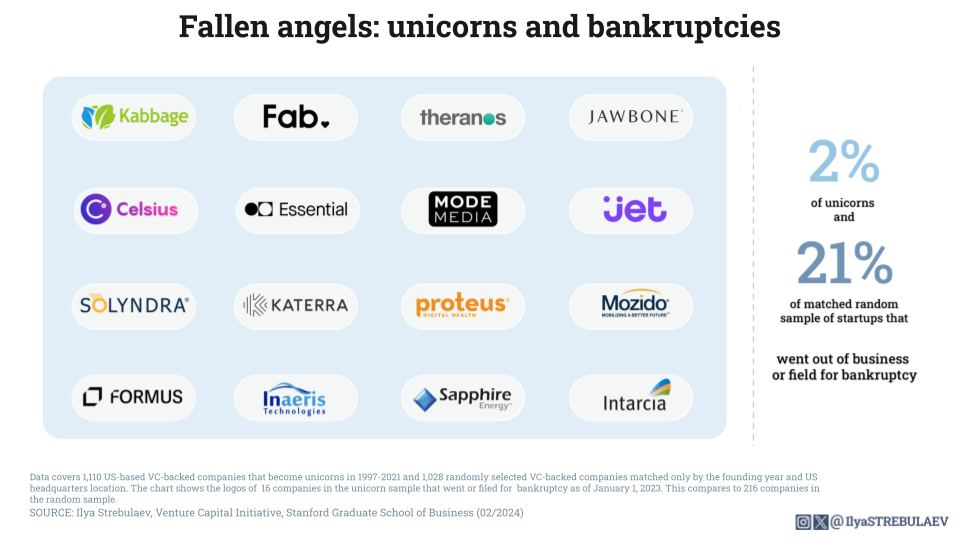
2. Venture Capitalists on why startups fail
We always highly recommend postmortem analysis. One can learn a lot from gaining a better understanding of what went wrong. Ilya and his team asked hundreds of VCs what factors contributed to their investment failures. What we learned may surprise many outside the world of innovation and venture capital. Technology, the market, and even the business model were all far behind one leading factor. The “team” is what mattered most.
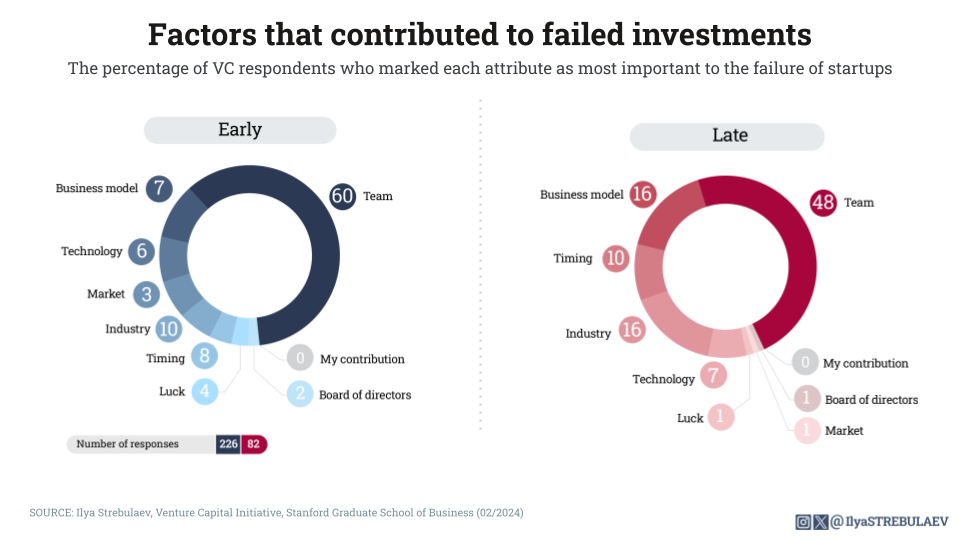
3. Stay Open to Innovation
Even though we praise some types of failures, one type of failure is a dangerous one—namely, a failure to recongnize change or stay innovative.
In our strategic workshops, we often discuss why many traditional organizations disappear or miss critical opportunities. We share quotations from three successful leaders who failed to see the approaching tsunami of change in their industry. We don’t want to blame these leaders—there are many reasons why they may have missed what was coming, or perhaps they had deliberately decided to focus on their core business. However, we think they might have achieved more had they run more experiments, taken more risks, and encouraged more failures.
These quotations remind all of us that we may sometimes feel too safe and secure—especially when we are at the peak of success—and, as a result, fail to recognize oncoming change.
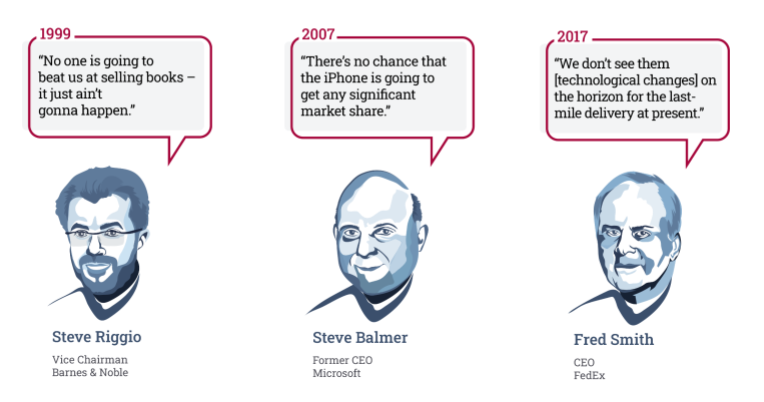
4. A Quote to Remember
“In the VC business model,” Mike Maples, founder of the Floodgate VC firm, told us, “you have to think of risk not as chance of failure, but as a chance of an upside success.” This mindset shift is not easy to make, but it is critical to see things differently. So the next time you evaluate the idea or a risky opportunity, hold on, wait a moment, and think about a different way to evaluate it. This may change your decision.
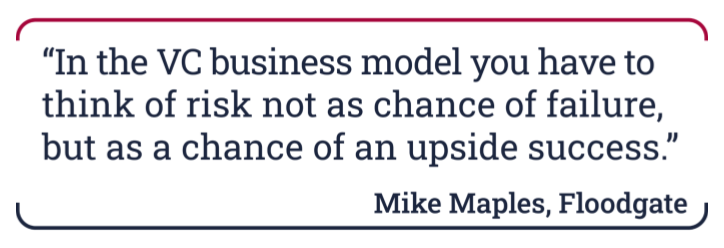
5. From the Classroom
For every Apple, Amazon or Google, there are many failures. How many? The VC statistics are harsh. In Ilya’s class at Stanford, he shares with students one important chart. The chances that a startup will survive and succeed are very low. Most startups fail—in fact, more than 4 of every 5 startups fail at the early stages. An early angel funding round is half-jokingly called FFF, which stands for Family, Friends, and Fools. Why fools? Startups are very likely to fail at this stage, and financially it is not a sound investment most of the time. But anticipating failure is an integral part of the VC model.
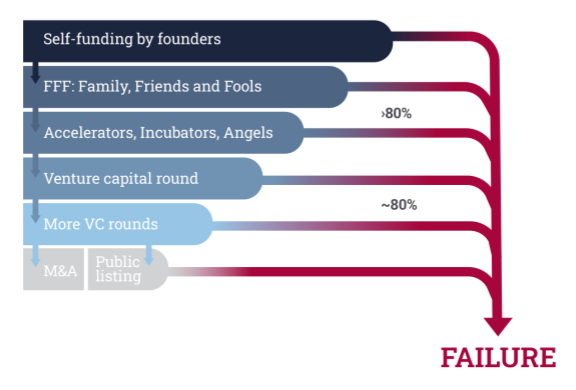
6. A peek into the book
It is hard for people to admit failure, especially publicly. The first time, it is painful. The second time, it becomes a bit more tolerable. The third time, you may realize that this is the way great things are done and start to feel proud of your failures.
Alex showcased his failed projects on his office wall when he was working for Amazon and McKinsey. Right next to the successful ones. At Stanford, you can even take a class on how to fail. It takes some courage to admit your failures publicly. We wrote about this in The Venture Mindset (available for pre-order). Here is a colorful excerpt:
Fifty adults in their forties and fifties stand up and raise their hands. All are successful. Many are senior executives of large global companies. Then, one by one, with smiles on their faces, they shout, “I failed!” The whole room is filled with repeated exclamations of “I failed!” This is not a meeting of a religious sect or a self-blaming exercise. Rather, it’s the beginning of a famous Stanford improvisation class taught by Dan Klein. The exercise allows our bodies and minds to accept the notion of failure, even if in a childish way. Each human being is afraid of failure, as we are trained by our nature and society to avoid mistakes and danger. Additional effort is needed to unwind this logic and acknowledge that high risk (including failure) is a natural side effect of high rewards.
A final thought
Have we had failures as we were writing our book? Of course! There were too many to list all of them. We asked senior executives of large corporations for interviews and never heard back from them. In one case, we did a great interview with a very successful leader, a lot of cool learning! Only to fail to get a response from her to OK making it public.We thought we knew the intricacies of book cover design better than our publisher did, and we failed dramatically.
One minor “failure” became especially hilarious. And constructive. In early 2023, we were in New York City for meetings. An important meeting in Manhattan, just before our flight back to the Bay Area, was canceled at the very last minute. We could have spent our morning sipping coffee in the hotel lobby, but Ilya came up with an idea. Since we had failed to have this important meeting and had two hours of down time, why not visit the Museum of Failure? Yes, there really is such a collection of failed product ideas. It was on exhibit in Brooklyn at the time. We jumped into an Uber and made success out of failure! This random event turned out to be the pinnacle of our trip, reinforcing our message that even the most successful business leaders can have massive failures. But how did the visit start? With a failure.
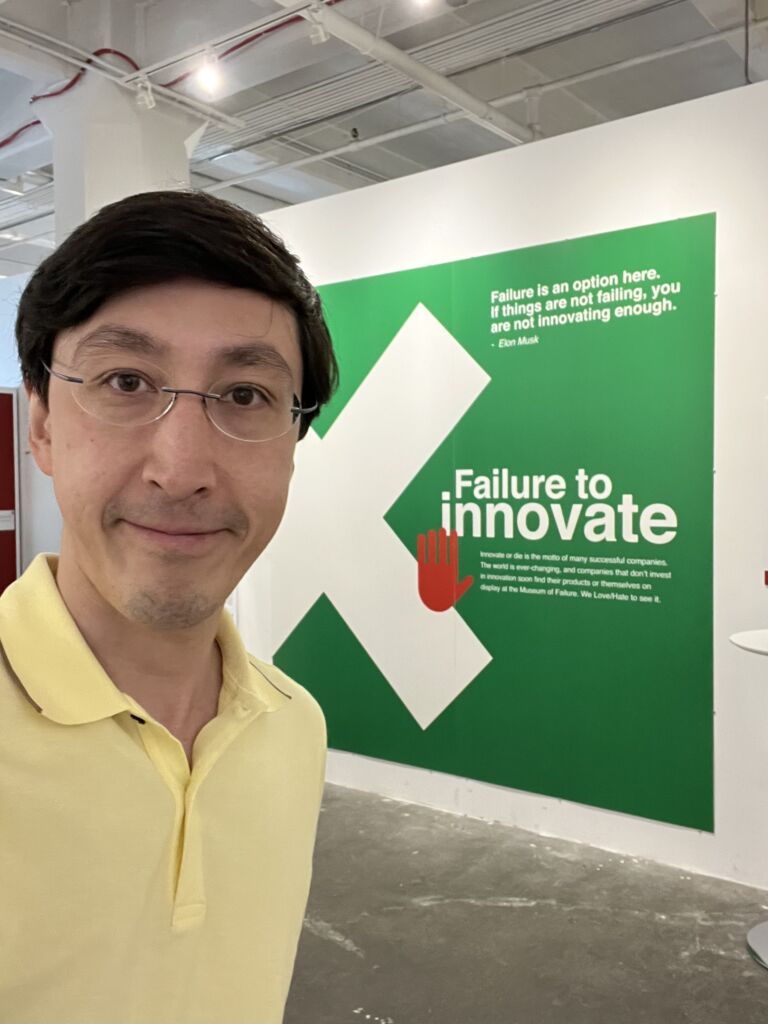
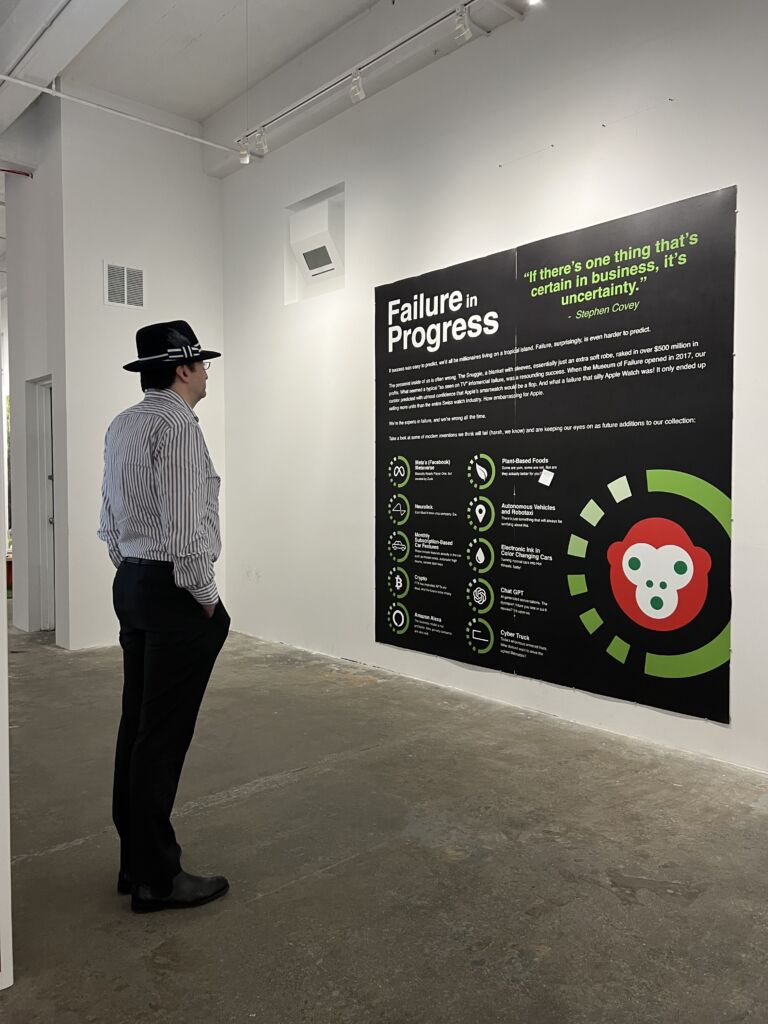
(At the Museum of Failure, New York, 2023)
Failures are rarely the end; more often they are just another milestone on the way to better outcomes, better products, and better ideas. So don’t be afraid of failures. They are often just the beginning of something great.
Stay venture-minded!
Ilya Strebulaev and Alex Dang


